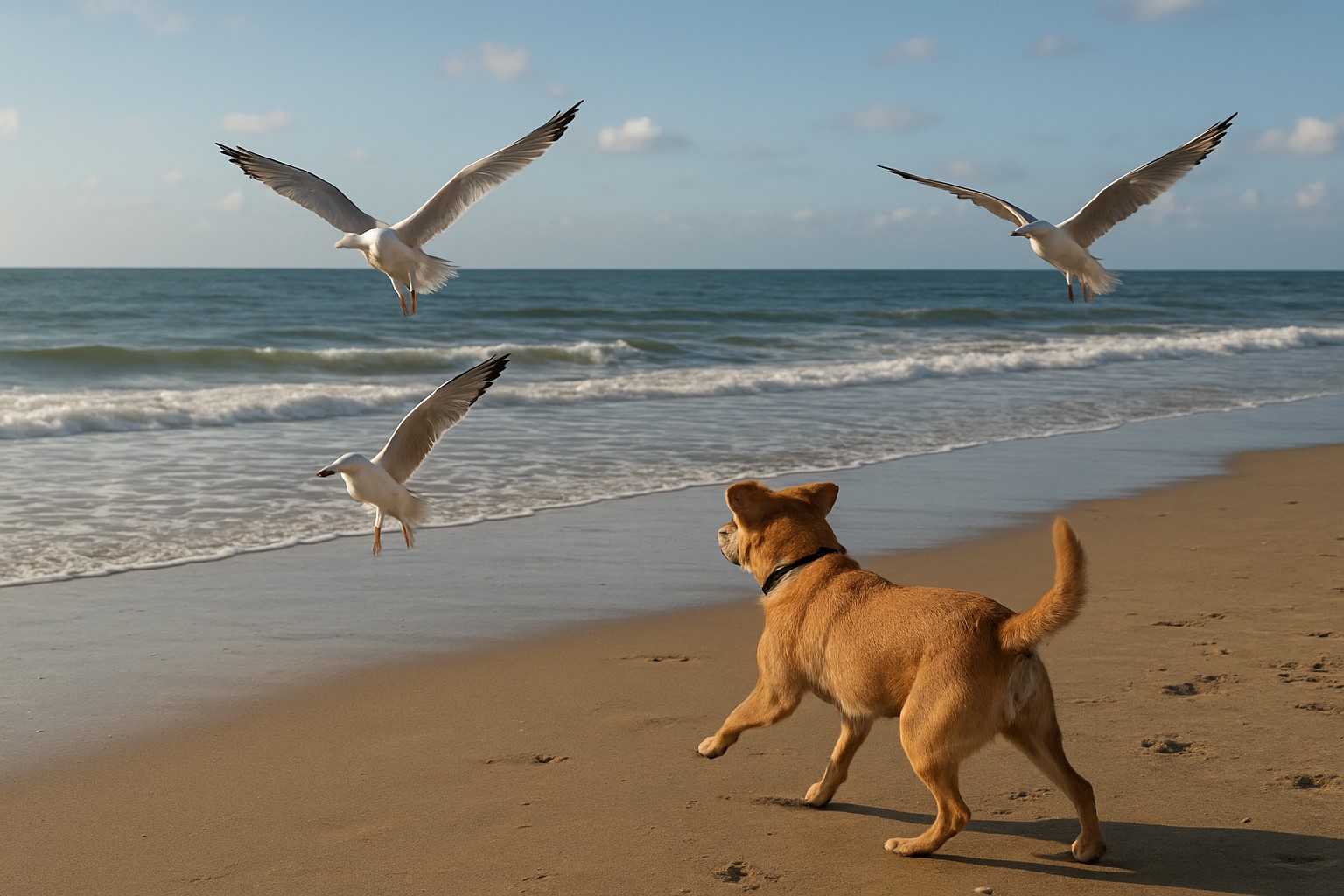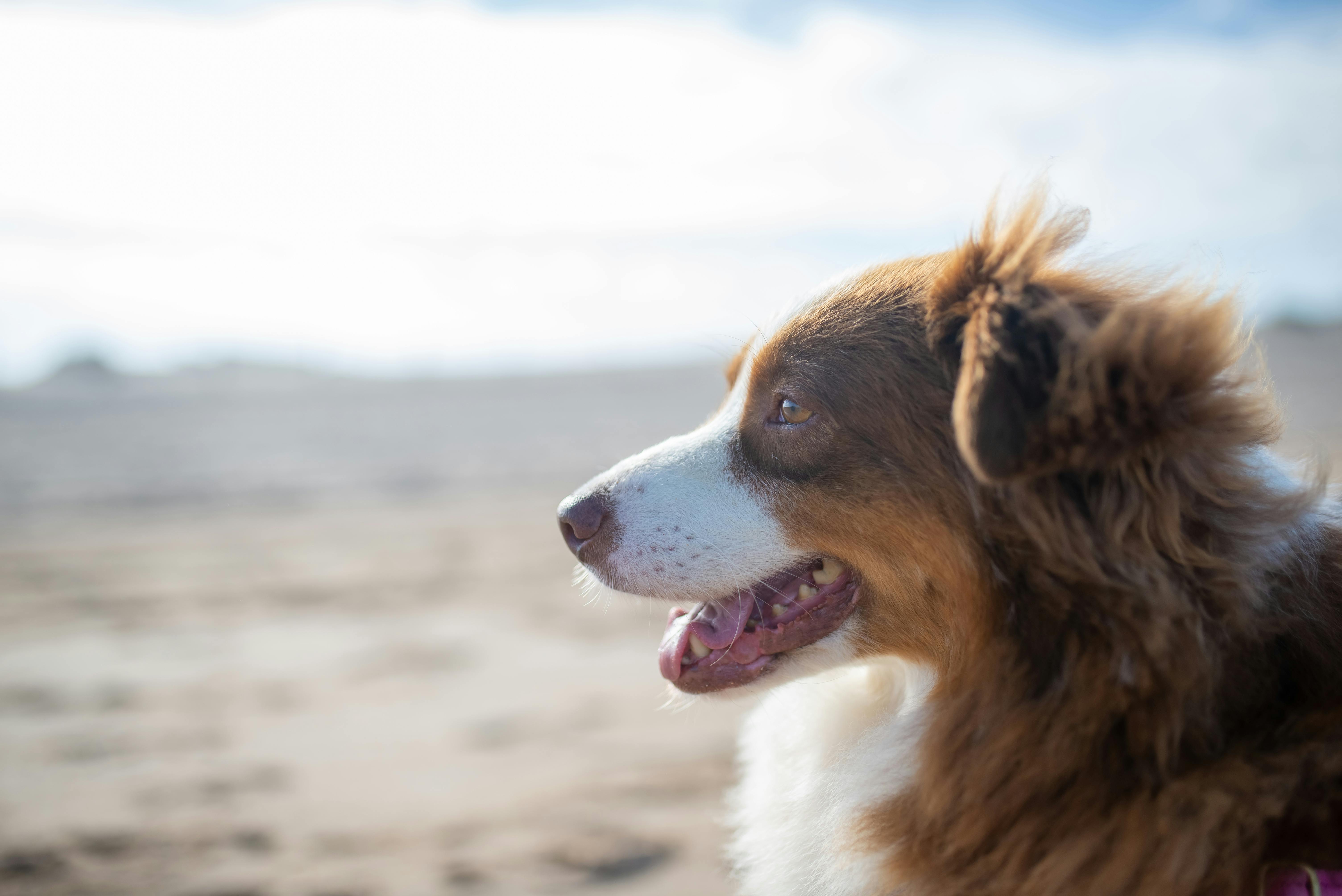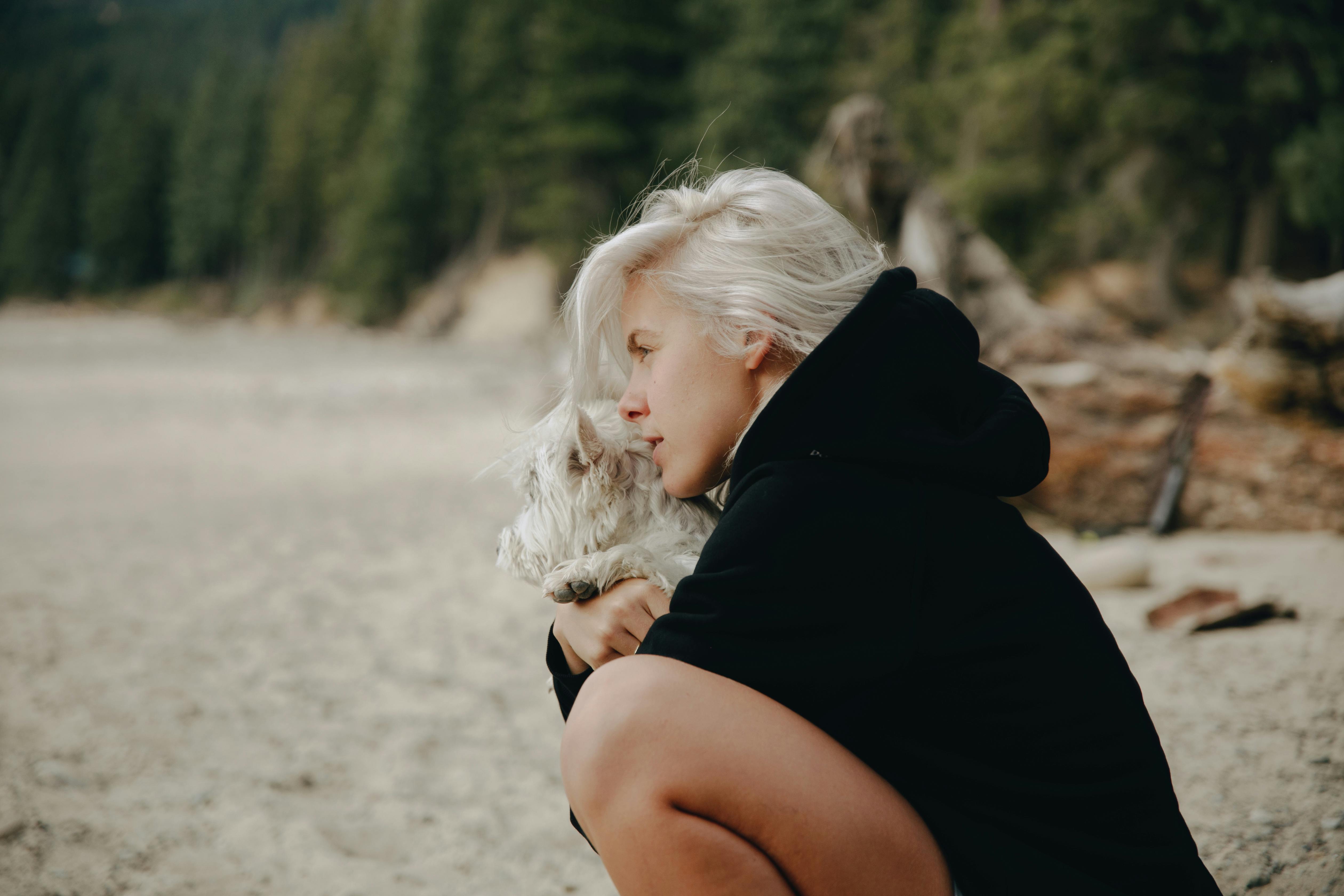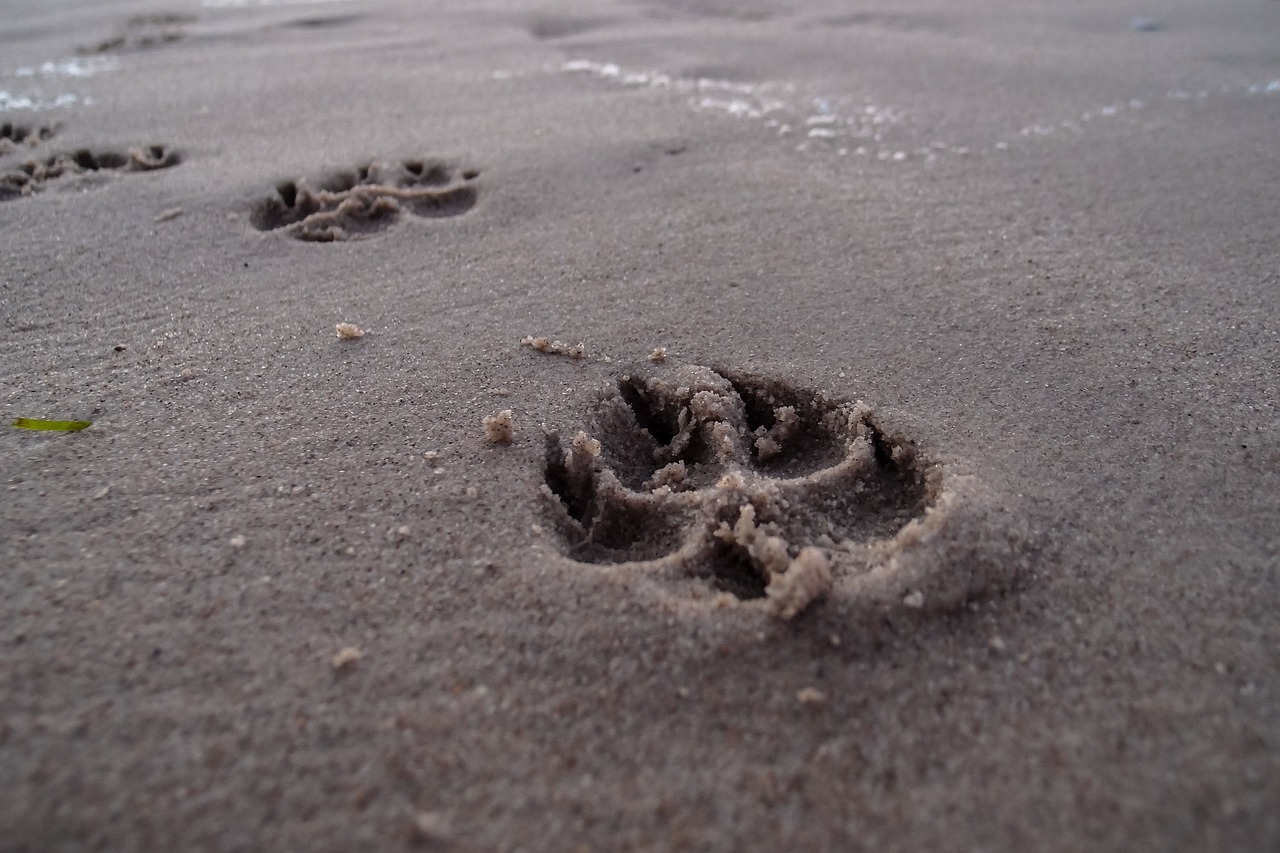Beach First Aid for Dogs: Handling Cuts, Scrapes, and Jellyfish Stings
A trip to the dog beach is full of fun — until your pup steps on a sharp shell or brushes against a jellyfish. Knowing what to do in those first few moments can make a huge difference in preventing infection and easing your dog’s pain. Here’s how to handle common beach injuries safely and calmly.
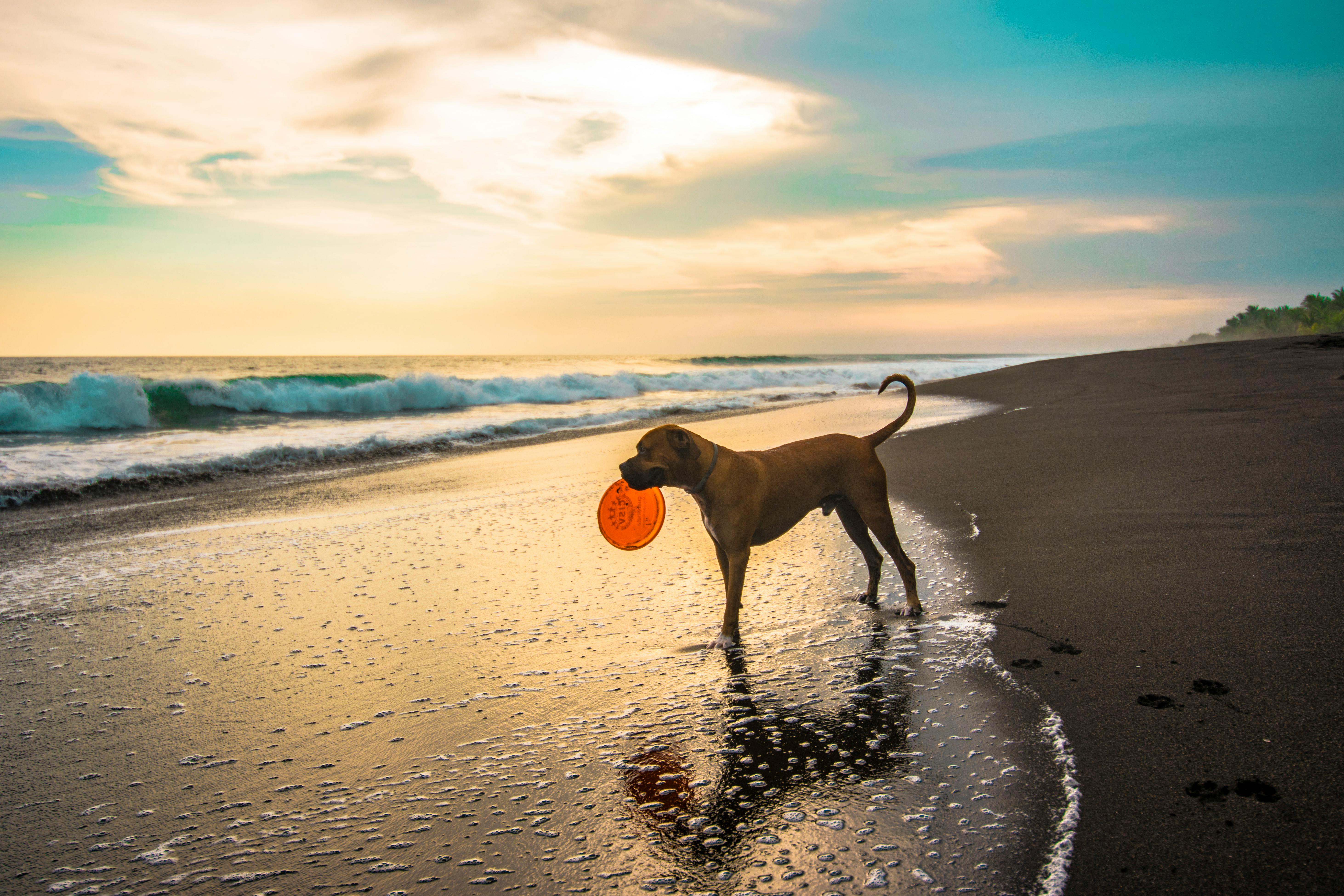
Why Beach First Aid Knowledge Matters
Dogs love to explore every corner of the beach — but sand, saltwater, and debris can cause unexpected injuries. Cuts from shells, scrapes from coral, and jellyfish stings are some of the most common issues veterinarians see after a beach day. Being prepared helps you treat small problems on the spot and know when to call a vet.
1. Treating Minor Cuts and Scrapes
Shells, coral, and driftwood can leave tiny cuts on your dog’s paws or legs. If you notice bleeding or limping, follow these steps:
- Rinse the wound gently with **fresh water** to remove sand and salt.
- Apply mild **antiseptic spray or saline solution** (avoid hydrogen peroxide or alcohol).
- Pat dry and, if necessary, cover with a light bandage or gauze to prevent sand irritation.
- Watch for redness, swelling, or discharge — signs that a vet visit may be needed.
2. Handling Jellyfish Stings

Jellyfish are common along Florida’s coastlines, especially after storms or during certain tides. Dogs may get stung by stepping on a tentacle or sniffing one washed ashore.
- Keep your dog calm and **away from the water**.
- Rinse the affected area with **seawater (not fresh water)** — freshwater can worsen the sting.
- Use **tweezers or a gloved hand** to gently remove visible tentacles — never rub the area.
- Apply a **baking soda and seawater paste** to help neutralize the venom.
- If your dog shows signs like **vomiting, swelling, or difficulty breathing**, contact a vet immediately.
3. Dealing with Sand Irritation and Eye Issues
Wind and play can blow sand into your dog’s eyes or nose. If your dog keeps pawing at their face or sneezing, try these gentle fixes:
- Flush eyes with **clean, lukewarm water or saline solution**.
- Avoid using eyedrops or medications meant for humans.
- If your dog’s eyes remain red or watery after rinsing, visit your veterinarian.

4. Saltwater Ingestion and Vomiting
Drinking saltwater can cause dehydration and upset your dog’s stomach. Common signs include vomiting, drooling, or fatigue. Always bring **fresh drinking water** and encourage your dog to take breaks under shade. If vomiting continues, or if your dog becomes lethargic, see a vet — severe cases can cause salt poisoning.
5. Building a Dog Beach First Aid Kit
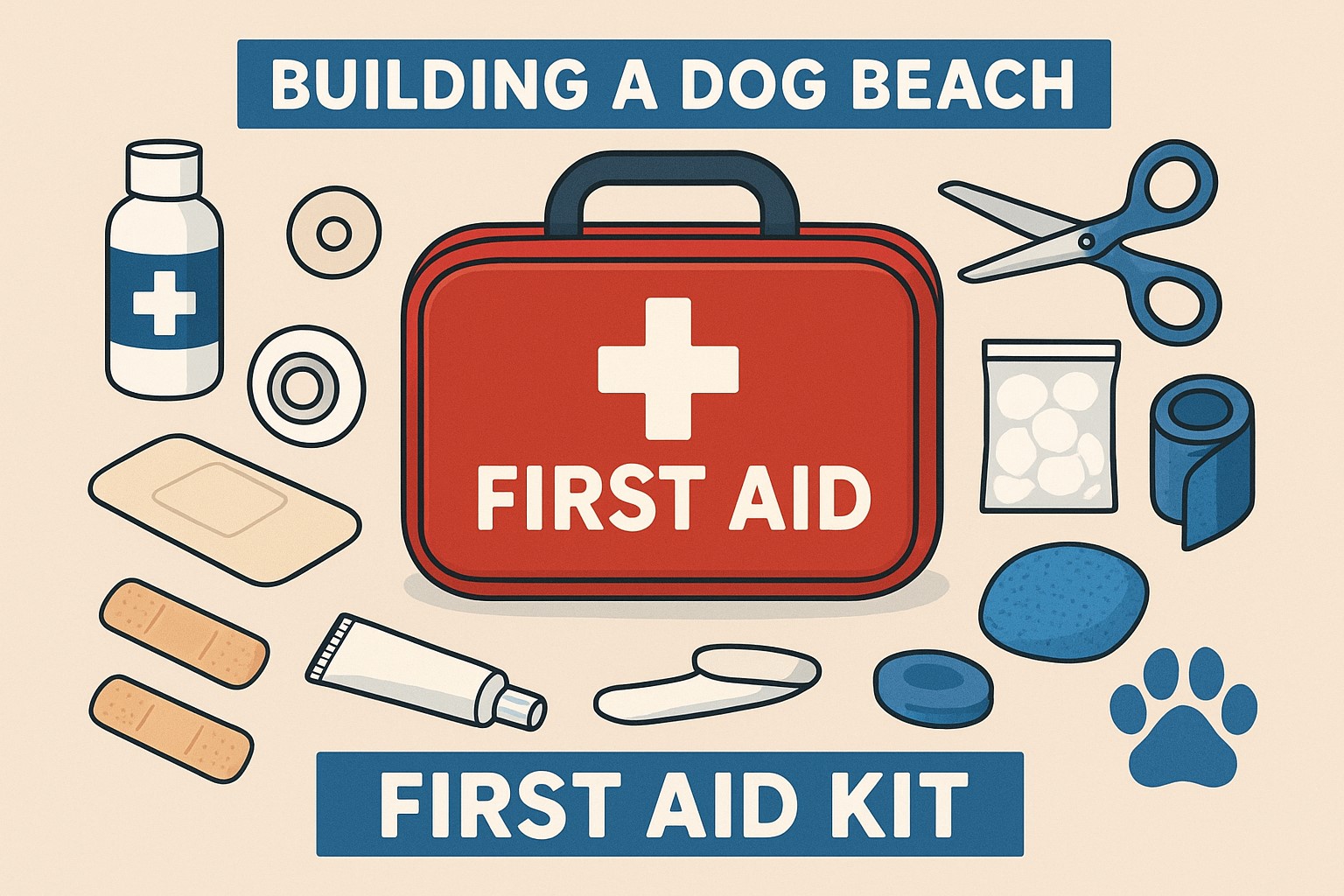
Every beach-loving dog owner should carry a small kit. Here’s what to pack:
- Saline rinse or antiseptic spray
- Gauze pads and medical tape
- Tweezers and small scissors
- Paw balm or ointment
- Hydrocortisone cream (for insect bites — vet-approved)
- Disposable gloves
- Emergency vet contact info
6. When to Call the Vet
Even with great first aid, some injuries need professional care. Call your vet if you notice:
- Heavy or persistent bleeding
- Swelling, redness, or pus around wounds
- Excessive panting or trembling
- Vomiting, drooling, or disorientation after saltwater ingestion or stings
Your quick response and calm care can prevent minor issues from becoming emergencies — keeping your beach days fun and worry-free.
The best first aid is prevention — always bring water, watch your pup closely, and know your beach’s local wildlife and conditions. A little preparation goes a long way in keeping your best friend safe on Florida’s shores.
